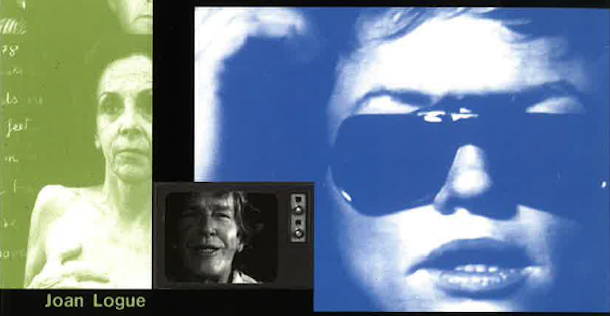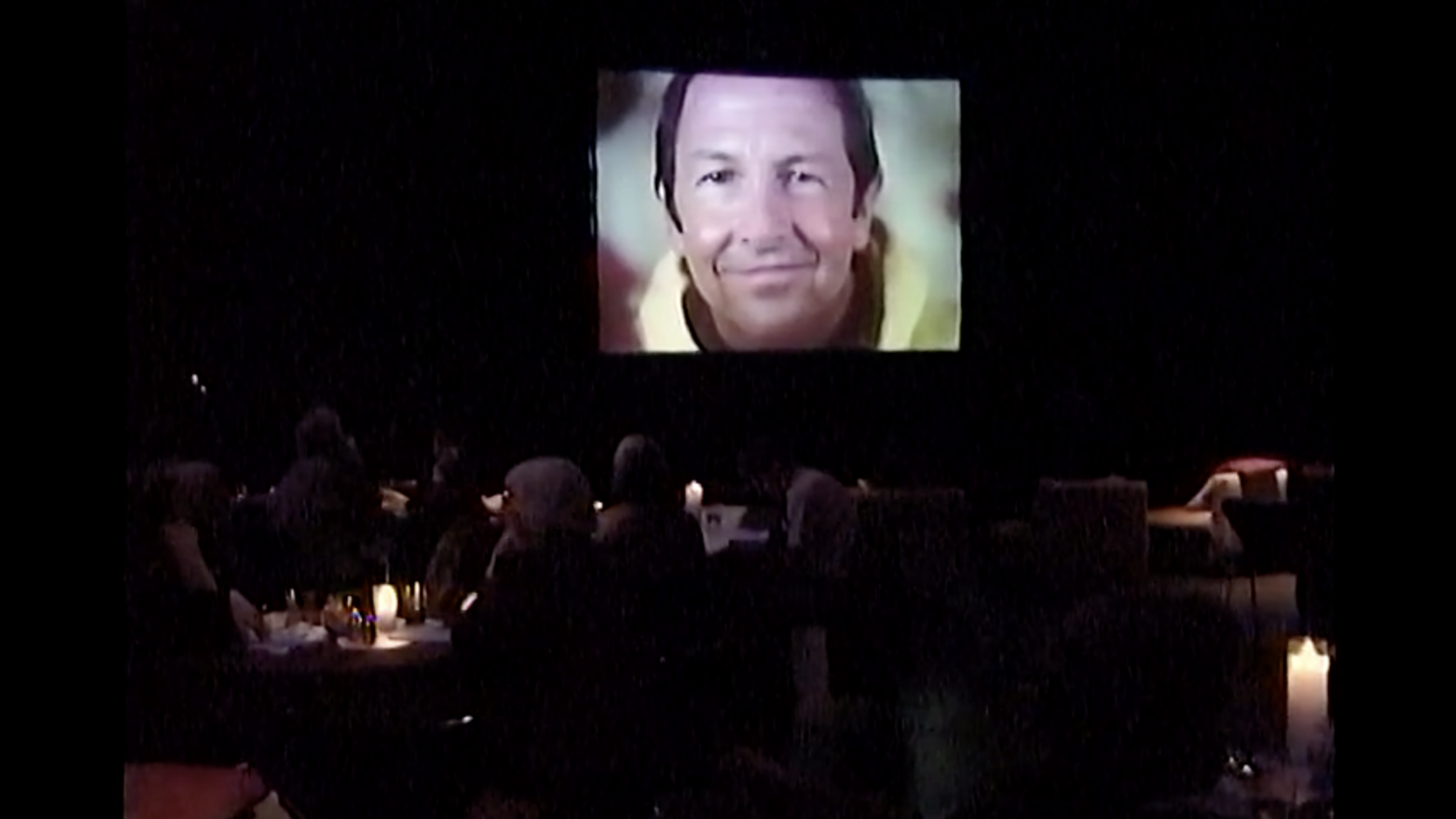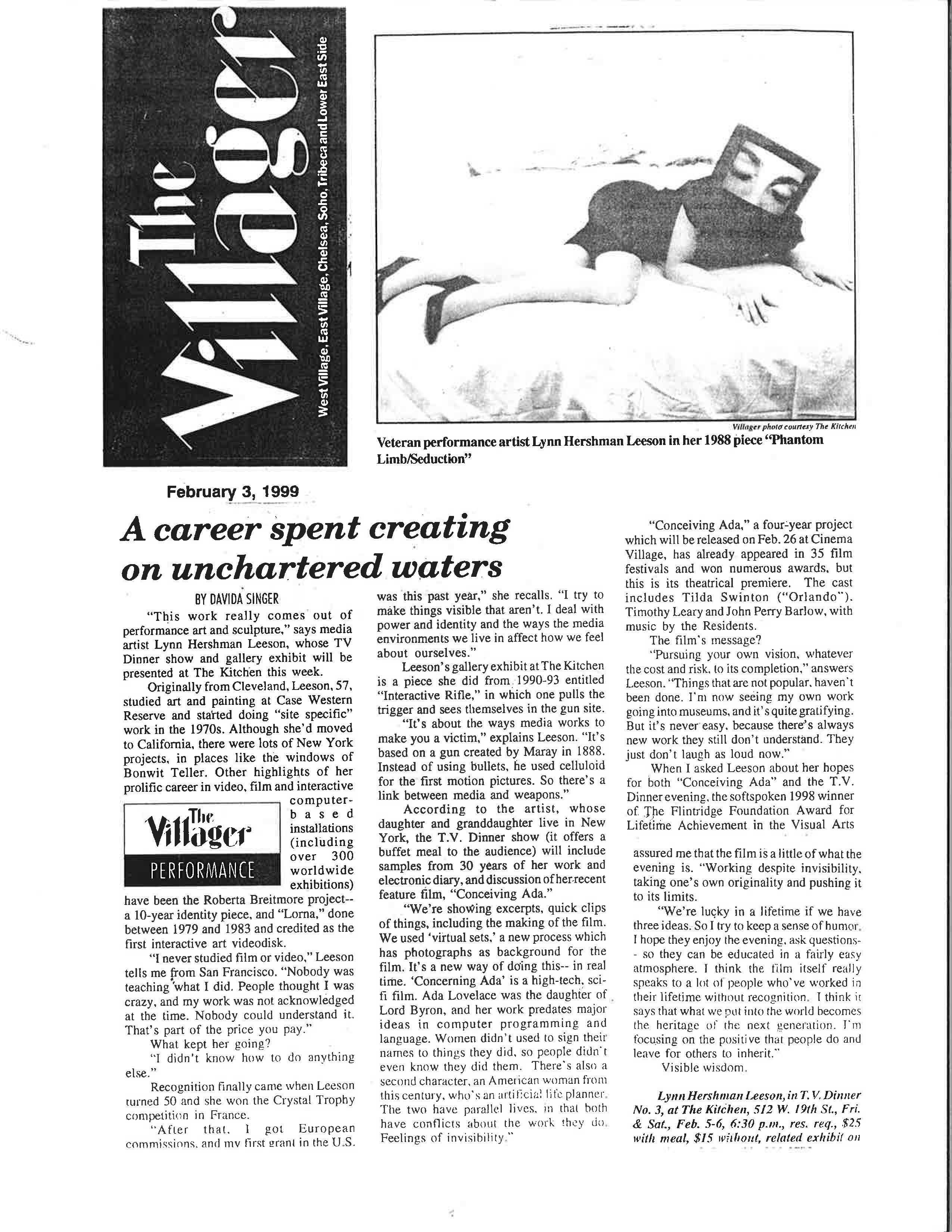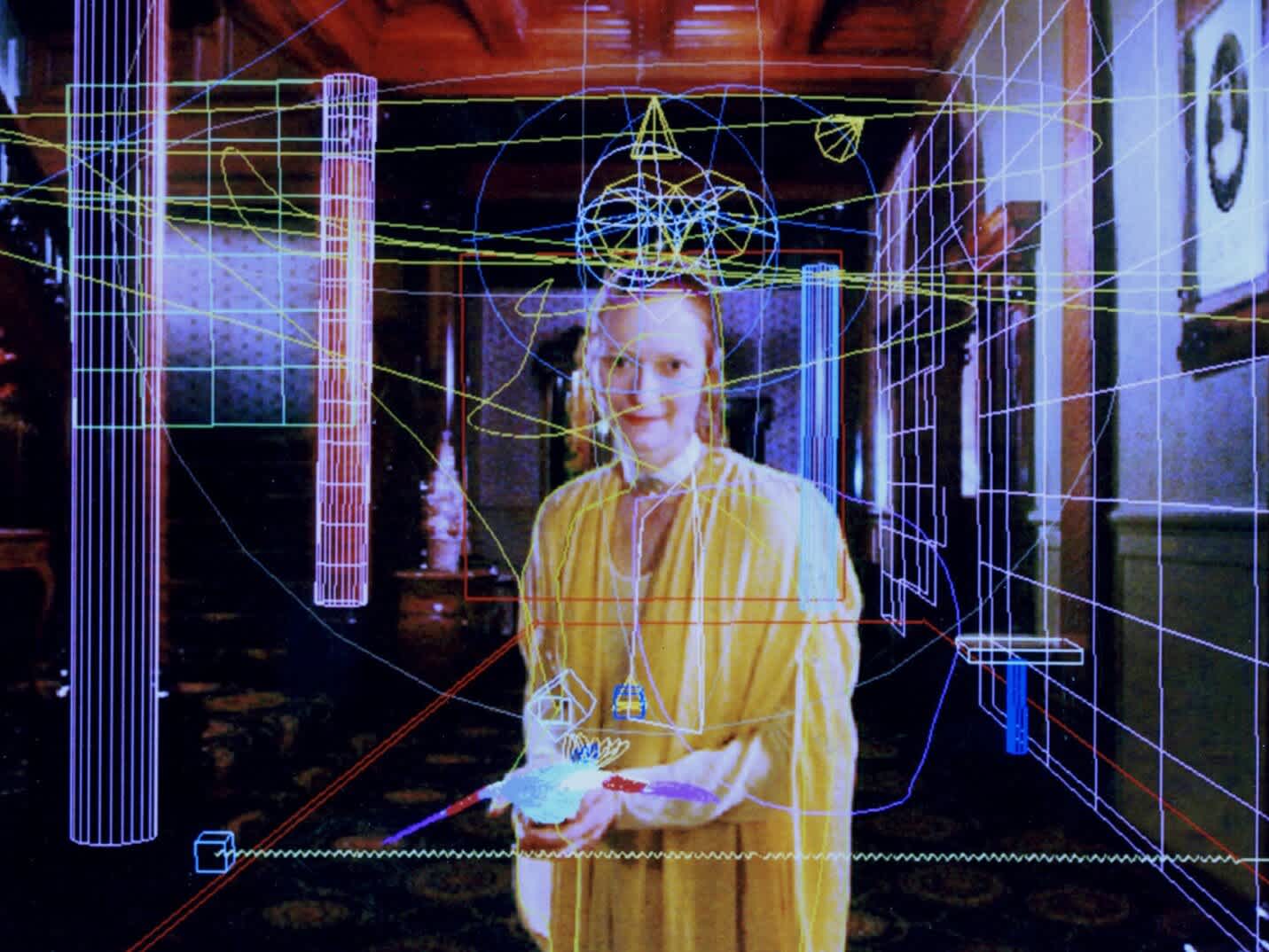
Credits:
By Mack Somers, Winter/Spring 2020 Curatorial Intern
May 11, 2020
Known for her pioneering work in media art, performance, and film, Lynn Hershman Leeson has been exploring the relationship between humans and technology since the late 1960s. She has collaborated with The Kitchen on three occasions: as part of the New Works, First Runs screenings in 1990, as the host of TV Dinner No. 3 in 1999, and as a contributor to the 2019 Editions Portfolio. During the last decade, Hershman Leeson’s work has been studied and exhibited internationally with renewed interest. Most recently, The New Museum announced a comprehensive exhibition, Lynn Hershman Leeson: Twisted (originally scheduled to open in July 2020 and now rescheduled for mid-February 2021). Given that this and other shows slated to feature her work have been postponed as a result of COVID-19, I took this opportunity to revisit Hershman Leeson’s career through the lens of her projects at The Kitchen.
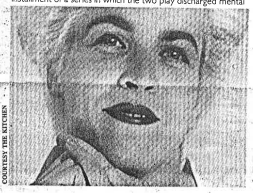
Hershman Leeson's relationship with The Kitchen began in February 1990 with her participation in New Works, First Runs, a program of recent short videos that were screened each afternoon for a month. According to a review in the Columbia Spectator, the five videos in the program were especially interesting in their exploration of “the relationships between video and the audience and between the medium and reality.” Alongside videos by other notable artists (Joe Gibbons and Tony Oursler, Ericka Beckman and Mike Kelley, Mary Hestand, and Ellen Spiro), the program featured Hershman Leeson’s Desire Inc. (1988)—a twenty-three-minute work that documents the unfolding of a social experiment through which the artist broadcasted a series of what she called “seduction ads” on local San Francisco cable channels. These four thirty-second ads featured an alluring blonde woman who invited viewers to speak with her by dialing the number on the screen.
Desire Inc. includes the advertisements, interviews with some of the respondents, and commentary from Hershman Leeson. According to an artist statement Hershman Leeson wrote at the time of the screening, “inserted into this work is an analysis of media and how it infiltrates desire that [is] then incorporated; the extension of the female body as the site for reproductive technology, and primal erotic impulses that result from early (nonresponsive) fantasty projections.” This work is an excellent example of Hershman Leeson’s sustained exploration of the role of identity—and especially feminine identity—within an ever-changing technological landscape.
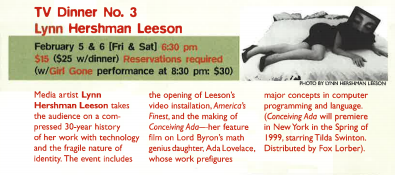
Nine years later when Hershman Leeson hosted the third iteration of the TV Dinner event series at The Kitchen on February 5, 1999, she performed a retrospective of her own work, indicating that the themes prevalent in Desire Inc. united much of her practice. The Kitchen’s TV Dinners ran from 1998–2004 and offered video artists the opportunity to screen and discuss some of their work with a live audience over a vegetarian, buffet-style meal. During her event, Hershman Leeson showed slides and clips of her work, sampling various projects from the past thirty years of her career, including installations, sculptures, performances, films, and new media. Among other works, she showed photographs from her Phantom Limb series (1985–1987) and clips from her recent film, Conceiving Ada (1997). The evening also kicked off a month-long exhibition at The Kitchen of her multimedia sculpture America’s Finest (1993–1994), which was described as an “interactive rifle.” The pieces included in the program speak to a principle that Hershman Leeson has since articulated in in a 2016 interview with curator Hou Hanru: when it comes to technology, “an awareness of the dangers and the benefits can provide a method of survival in an enhanced and profound manner.”
The works in Hershman Leeson’s Phantom Limb series illustrate a dangerous fusion of women’s bodies with media and technology. The series builds on the artist’s longstanding interest in cyborgs—part-human, part-machine hybrids—which she explored early in her career with works such as Breathing Machines (1965–1968). Instead of producing disembodied wax heads animated by speakers that played sounds of breathing, speaking, and giggling as she did with the Breathing Machines, in her Phantom Limb series, Hershman Leeson beheaded her subject, leaving only “phantom limbs” attached to images of household devices like like televisions, cameras, clocks, binoculars, and telephones. The bodies appear as if they were clipped from advertisements with their thin figures; smooth, white skin; and contrived poses. In some photographs in the series, like Reach (1986), missing body parts are reflected in the glare of the lens, raising questions of whether they belong to the viewer or the subject.
In a description of the Phantom Limb series included in Hershman Leeson’s 1994 essay, “Romancing the Anti-body: Lust and Longing in (Cyber)space,” she explains that “the seduction of media” causes a phenomenon in which “reproductive technological parts sprout from the image of the female, creating a cyborgian reformation as parts of the real body disappear.” The series reckons with questions of who benefits from these reproductive technologies, how they represent and mutate the subject, and what is included and left out of media imagery.
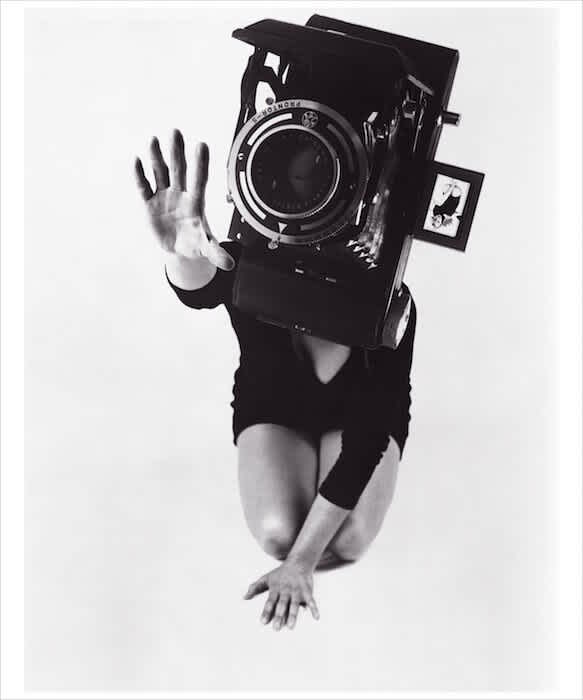

In another piece that Hershman Leeson discussed during her TV Dinner, Conceiving Ada, women reestablish their control over technology. Conceiving Ada was Hershman Leeson’s first feature-length film, born out of frustration with her video works like Desire Inc. being shown within the limited context of small exhibitions in the margins of international film festivals. Wanting to reach a larger audience, she teamed up with actress Tilda Swinton to produce Conceiving Ada—eighty-five-minutes of cyber-feminist, historical-fiction-meets-sci-fi cinema. Swinson plays Ada Lovelace, a 19th-century mathematician who wrote the first programs for Charles Babbage’s Analytical Engine—an early computing machine that is now considered an ancestor of the modern computer. In the film, a fictional computer programmer, Emmy Coer (played by Francesca Faridany) becomes obsessed with Lovelace and develops a computer program that allows the two women to communicate, entangling their lives forever. Despite the temporal distance, many parallels exist between Coer and Lovelace: controlling mothers, jealous husbands, independent spirits, interest in new technologies, and remarkable intelligence. The restorative narrative asserts that women have always held a central role in the development of the computer, and the film presents the model of a modern woman wielding technological expertise despite discrimination. During her TV Dinner, Hershman Leeson showed footage from production and the final film, highlighting the filming and editing process.

Opening on the day of the TV Dinner and on view throughout the following month, Hershman Leeson’s interactive rifle America’s Finest was presented on the second floor of The Kitchen. To create the piece, Hershman Leeson modified an M-16 rifle to produce an interactive new media sculpture with the help of miniature cameras, screens, and a computer system hidden within the pedestal. The armature that connects the rifle to the pedestal allows for the device to tilt and rotate into any position, which allows the user to cradle the gun and point it around the room. Looking down the enlarged scope of the gun, the viewer encounters the new media aspect of the piece for the first time. While one would expect the scope to function normally—to home in on the surrounding visuals in the gallery—instead a built-in video monitor shows moving images of women, children, and soldiers caught between the crosshairs. A disembodied robotic voice tells you to “pull the trigger.” When the user follows this command, they are startled with an auditory stimulation of gunshots from the speakers built into the pedestal. Suddenly, their own image, taken with a hidden microcamera, replaces the videos and photographs of anonymous victims.
The user is startled as they become both the instigator and subject of the violent act: as the soldier they encounter their own capacity to kill, and as the civilian they encounter their own mortality. The same robotic voice that told them to shoot now repeatedly implores them to “look at what you’re doing.” While operating a model of gun that was deployed in the Vietnam, Korean, and Gulf Wars, the user encounters an anti-war message that promotes empathy through embodied experience.
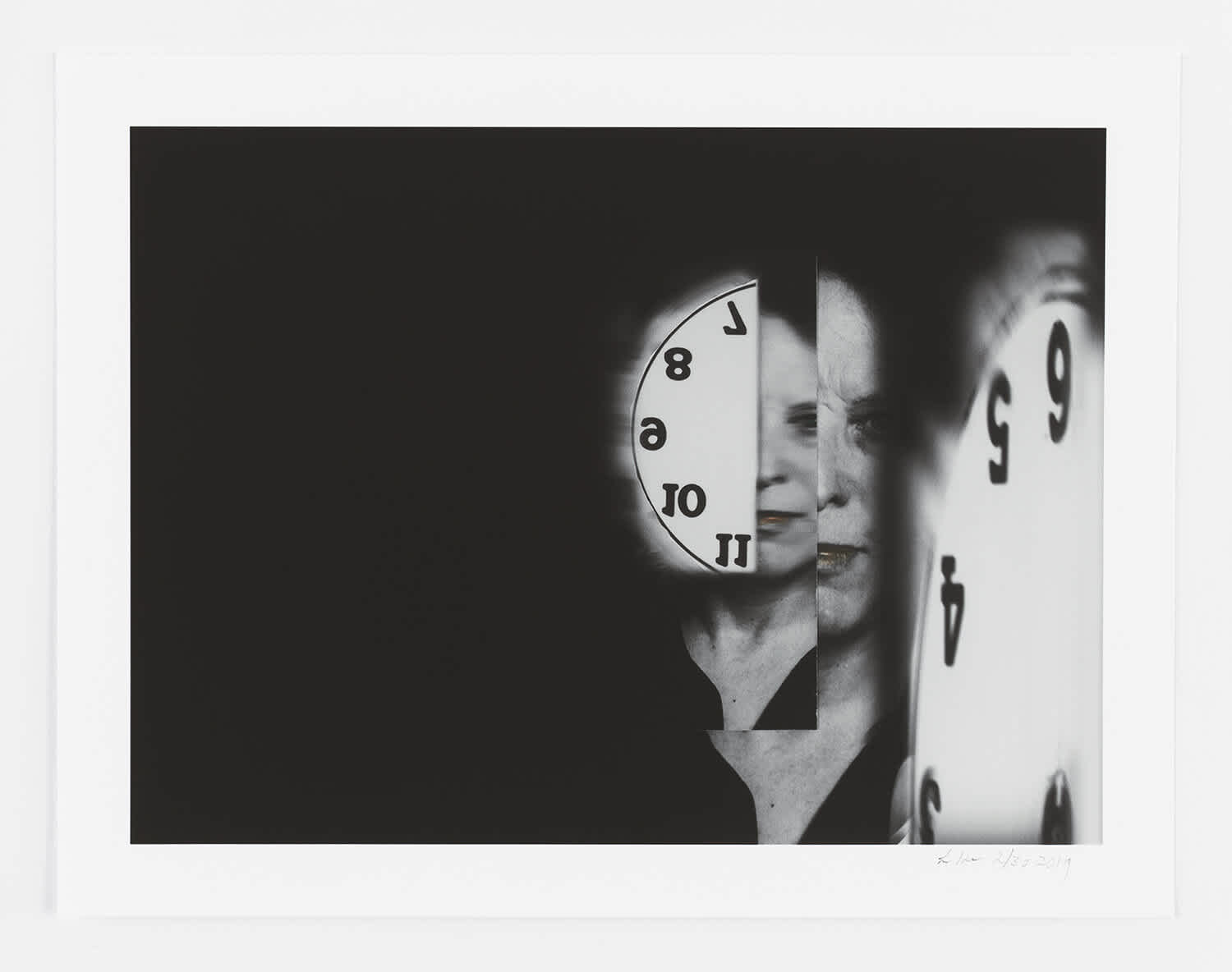
Much of Hershman Leeson's work engages with questions of the body and identity in relation to new technologies. Instead of taking the position of a techno-optimist or techno-pessimist, she scrutinizes the boundaries between the human and the machine to find joints and fissures. This exploration motivated the Desire Inc. experiment that she presented during The Kitchen’s New Works, First Runs screening in 1990 and the pieces she presented during TV Dinner No. 3 in 1999. Her latest engagement with The Kitchen—the print +multiple fACES (2019) created as part of The Kitchen’s 2019 Editions Portfolio—gestures back to her work in the 1990s to consider anew the cyborgian synthesis of body and clock. +multiple fACES recalls work from the artist’s Phantom Limb series, especially Biological Clock (1986), which critics have interpreted as a commentary on society’s habit of devaluing women as they age. This 2019 portrait unites Hershman Leeson’s long-standing artistic concerns with a relatively recent one: her own aging body. Hershman Leeson’s daring experiments have contributed to The Kitchen’s program over the past three decades and continue to this day to add layers to the institution’s ongoing engagement with new media.
To learn more about +multiple fACES or to purchase a print, visit The Kitchen’s online store. Proceeds from the sale of this limited edition will support artists whose groundbreaking, genre-defying work appears at The Kitchen throughout the upcoming seasons.
